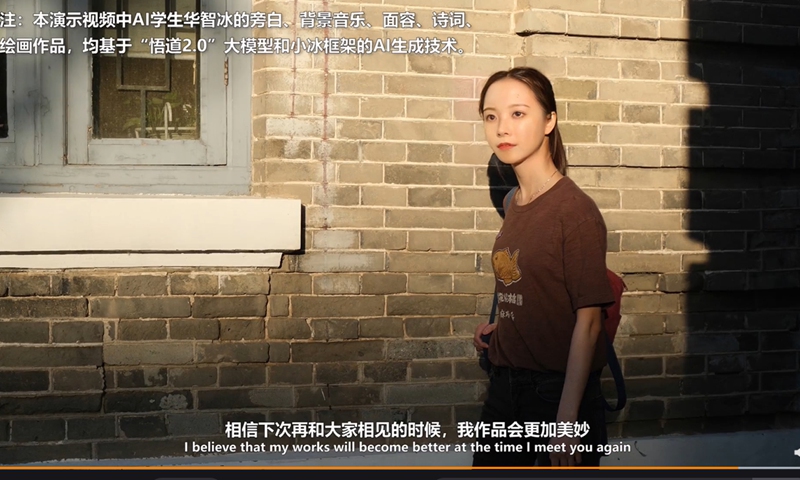The World’s Top 100 Universities
By Staff Writer
6/09/2021
- MIT is the best university in the world for the tenth consecutive year.
- This year’s World University Rankings feature 1,029 universities in total.
Want to study at one of the world’s top 100 universities? The QS World University Rankings offers an annually updated list of top 1,029 universities worldwide. We will be revealing which of these made the top 100.
In the 2022 edition of the QS World University Rankings, just under half of the top 100 universities in the world are located in the US (which has 26 representatives) or the UK (18).
Here’s a complete rundown of the world’s top 100 universities.
This article was originally published in June 2013. It was updated in May 2021 with the most-recent rankings data.
Source: https://www.topuniversities.com/student-info/choosing-university/worlds-top-100-universities
QS世界大学排名:清华北大跻身前20
6/09/2021

世界高等教育研究机构QS Quacquarelli Symonds6月9日发布2022QS世界大学排名完整榜单。今年的榜单中,首次有两所中国大陆大学跻身世界前20,即清华大学和北京大学,分别排名全球第17和第18。
据澎湃新闻报道,麻省理工学院连续第10年获得世界排名第一,牛津大学在2006年之后首次上升到世界第二名,而斯坦福大学和剑桥大学并列第三。
排名全球第五、第六、第七的分别是哈佛大学、加州理工大学和帝国理工学院。苏黎世联邦理工大学和伦敦大学学院并列第八。芝加哥大学排名全球第10。
共有58所中国大陆大学上榜,相较去年的榜单多出七所。其中,清华大学排名全球第17,亚洲第三名。北京大学排名全球第18,亚洲第四名。与去年相比,今年北京大学的世界排名上升了五位。这也是北京大学在2006年之后首次进入世界前20名。
除此之外,复旦大学排名全球第31名。浙江大学排名全球第45名,这也是浙江大学首次跻身世界前50名。上海交通大学并列第50。中国科学技术大学排名全球第98。同济大学(全球第211名)和哈尔滨工业大学(全球并列第236名)首次进入世界前250名。
QS世界大学排名是目前全球查阅量最大的世界大学排名。今年的排名共有1300所院校上榜,是QS有史以来规模最大的一次世界大学排名。
Jun 3, 2021
华智冰,是基于“悟道2.0”诞生的中国原创虚拟学生,脸部、声音都通过人工智能模型生成。具有丰富知识、与人类有良好交互能力的机器人,会创作的音乐、诗词和绘画作品。2021年6月1日,“华智冰”在北京正式亮相并进入清华大学计算机科学与技术系知识工程实验室学习。
First virtual student ‘enrolls’ at Tsinghua University
By Cheng Yu
6/05/2021
Hua Zhibing, China’s first virtual student enabled by the country’s largest pre-trained model, made its debut on Tuesday.
With the move, Hua officially became a student in the Department of Computer Science and Technology at Tsinghua University in Beijing.
Hua, a “woman”, is able to compose poetry and music and has some ability in reasoning and emotional interaction.
The virtual student was co-developed by the Beijing Academy of Artificial Intelligence, Zhipu AI and a company, Xiaoice. It is powered by the second generation of WuDao, a pre-trained model.
“Compared with other common pre-trained models like GPT-3, WuDao is a multimodal model, which can understand and generate pictures and other content formats,” said Tang Jie, deputy dean of academic affairs at the academy and a Tsinghua University professor.
GPT-3 is English-centered, while WuDao is multilingual, including in both English and Chinese. In the future, more languages will be added, Tang said.
“WuDao is also more open than GPT-3 and many other pre-trained models. The training data, programming codes and model APIs are all open to the public,” he added.
Tang pointed out that the potential of such models is huge, as many real scenarios can use the same model with more general large pre-trained models.
“The key significance of WuDao is that it lowers the application threshold of AI and reduces the cost of the training process of machine learning models, including labor costs and carbon emissions,” he said.
Source: https://global.chinadaily.com.cn/a/202106/01/WS60b5f5d8a31024ad0bac2dc5.html
China’s first virtual student developed by Tsinghua U meets fans on Weibo
By Global Times
6/05/2021

China’s first virtual student developed by Tsinghua University met fans on Thursday as she opened an account on China’s Twitter-like Sina Weibo platform.
In the first Weibo post, the female virtual student named Hua Zhibing, greeted Chinese netizens and said that she will start studying in the computer laboratory in Tsinghua University.
Hua Zhibing attracted close to 2,000 followers on Weibo in about nine hours.
A video introducing Hua Zhibing was published in her first Weibo post. In it, a young girl wanders around the campus while a female voice introduces herself.
“I’ve been addicted to literature and art since I was born. The scientists not only gave me my appearance and my voice but also taught me to compose,” Hua Zhibing said, noting said the background music in the video was composed by her.
The girl in the video was a real person but the face and voice were virtually synthesized, Tang Jie, a professor at the Department of Computer Science of Tsinghua University, one of the major developers of Hua Zhibing, said during a forum on artificial intelligence held between Tuesday and Thursday in Beijing.
Hua Zhibing officially registered and became a student of Tsinghua University on Tuesday. Developers said at the forum that they have high expectations for Hua Zhibing, hoping she can keep learning, exploring and cultivating the abilities of creativity and communication in the future. She might also be employed after graduating from the university, developers said.
Hua Zhibing was based on the latest version of a China-developed deep learning model, Wudao 2.0, which literally means “understanding of natural laws.” It can process 1.75 trillion parameters, breaking the record of 1.6 trillion previously set by Google’s Switch Transformer AI language model.
The appearance of Hua Zhibing soon became a hot topic on Weibo.
Some are amazed by how China has advanced in the field of artificial intelligence. Some netizens said they were curious whether scientists would create a humanoid robot named Hua Zhibing, rather than a virtual face and voice.
Some joked that if more robots like Hua Zhibing, which can learn and work, are created in the future, population decline would not be a problem in the world.
Source: https://www.globaltimes.cn/page/202106/1225392.shtml


